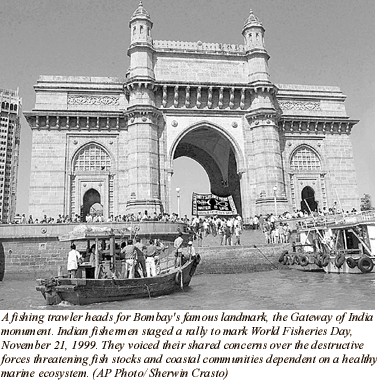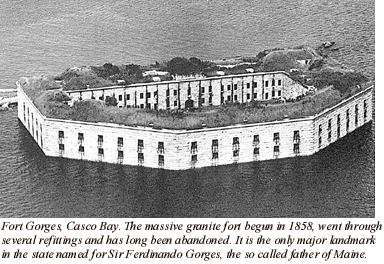Archives
Subscriptions
Advertising
Table of Contents
Editorial:
Regulation Without Representation.............2
Story of an Old Fisherman......................7
Sea Scallop Opening.........................8
Letter to the Editor.......10
Hunting Ethics..............11
Snowe Urges Extension of Comment Period.....12
Retraining Program.......13
New Business...............14
Meeting Notice.............15
Southwest Harbor Waterfront Tax Increase.......................16
Property Tax Meeting.......................17
E-Schemes &
E-Scams.......................18
DMR Prohibits Salmon Racks as Bait................20
Congress Gives Final Approval.....................21
NOAA Seeks Comments.....................22
NOAA Announces New Permit Provider..........24
Urchin Enhancement a Pioneering Effort.......26
Christmas, Two Scenes........................28
Music Review..............29
Classifieds....................30
MANAGING EDITOR
Bill Crowe
LAYOUT & DESIGN
Lance Lobo
TYPESETTING
Roberta Lobo
STAFF WRITERS
Bernice Johnson
Paul Molyneaux
CONTRIBUTING WRITERS
Kittridge Johnson
Mike Crowe
Lee S. Wilbur
SALES MANAGER
Bill Crowe
|
|
A Matter of Scale
by Paul Molyneaux
| |
In Stonington, Maine, lobsterman Marsden Brewer is hauling his traps ashore for the winter. He is one of a growing number of Maine fishermen who believe that the time has come when inshore fishermen need to organize and speak with one voice if they intend to preserve their way of life.
Brewer helped form the Stonington Fisheries Alliance last June. "I just looked at the state of the resources and realized something's got to be done," he said. As a member of the alliance steering committee, he expects to spend much of the coming winter dealing with the various fisheries management agencies. Brewer believes the focus has to be on protecting the stocks his community depends on.
Along with protection of the resources, goes the protection of access to those resources. Brewer and many others in Maine say a system known as community-based management is the best way to protect both the fish and the fishermen.
In the past few decades, as improving technology increased fish harvesting capabilities, many industry observers predicted a "tragedy
|
 |
|
of the commons,"where each fisherman seeking to advance his own interests would overfish the available stocks to the detriment of everyone involved. According to many experts, privatization of the resource through Individual Fishing Quotas (IFQs), more commonly known as Individual Transferable Quotas (ITQs)
|
because they are often created as a commodity which can be bought and sold, would be the only way to create sustainable fisheries.
But experience with ITQs has shown that they often lead to consolidation
continue
|
|
Ancocisco Bay Islands
by Mike Crowe
| |
Depending on which are counted as islands, there are about 140 in Casco Bay. When first settled, area Indians called it ancocisco, "place of the Herons," a word from which Casco may be derived. Some were sites of the earliest settlements, not only in Maine, but in America. Most of the islands have a story, some with physical evidence of human habitation. A few of these islands have a history of changing hands frequently in the early years.
"The Rodman guns fired a 125-pound projectile three miles."
One of the primary appeals the islands had was greater security. In those first settlements feeling island life might be isolated meant little, since those who lived on the mainland resided in a narrow strip between the ocean and a vast unknown sea of wilderness. With no place to build them to, there were no roads. But the feeling that the unknown could easily enter the settlement was a constant fear for some. That hostile Indians could and did
|

| was a concern for all.
If not a barrier, the sea provided a buffer zone for these few early settlers. Larger islands with arable land could be farmed and the waterline was a fence for cattle. Islands were assaulted by Indians who would rush an island from shore paddling canoes at speeds which startled settlers. Even with the edge they had firing from land, settlers were sometimes overwhelmed.
Christopher Levett, considered the first permanent white settler,
|
built a stone house on an island in 1623, three years after the Mayflower landed at Plymouth. Levett, a crown forester had been granted 6000 acres. While hoping to establish a colony like many others, unlike them he made an effort to befriend many Indians. Levett returned to England in 1624 to recruit new settlers, but never returned. His Casco Bay holdings, including Cushing Island, were sold. But islands were where things were continue
|
  
©1999 ekp999
|
|

